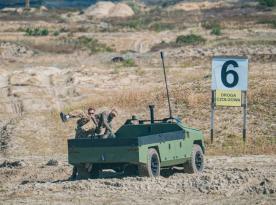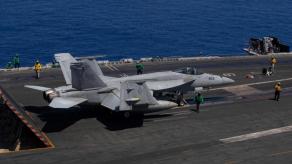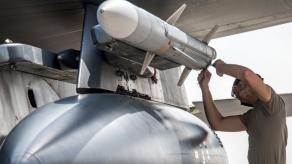Evolvement of Sea Baby, the signature naval drone of the Security Service of Ukraine, did not happen in a night but progressed in parallel with combat missions, noting down successful solutions, discarding failed ones, adapting to russian countermeasures in real time. Having proven lethal to both tactical assets like the 11 russian warships it struck and strategic ones like the Crimean Bridge, Sea Baby has cemented its name as a powerful asymmetric naval warfare solution Ukraine has developed in the midst of the war with russia, alongside the Magura V5/V7.
Compared to its early models, the latest Sea Baby naval drone is barely recognizable nowadays. Initially a simplistic experimental kamikaze drone, the modern iteration is a full-fledged multi-purpose platform with options for further modification depending on the task at hand.
Read more: This Sea Drone Mission Became Rehearsal For Ukraine's Operation Spider Web

The unmanned surface vessel can now be equipped for protecting area from maritime and airborne threats, carry smaller drones, or strike down big targets as a conventional one-way attack (kamikaze) unit. The other day, the SSU handed one of its Sea Babies, damaged in battle, to the national WW2 history museum, which revealed how the Security Service refined its tactics in preparation for Operation Spider Web against russian strategic aviation.
Nowadays, Sea Baby is armed with a remotely controlled turret with a 7.62mm PKT machine gun. The SSU notes that the latest Sea Baby can also be armed with larger-caliber gun turrets, complemented with ballistic computers and a target tracking system for aimed fire which help in taking down low-flying aircraft.
One variant can take sea mines aboard. It was created in 2023 and first disclosed to the public in 2024, already with four russian ships blown up on these mines — the Samum air cushion missile ship and the Project 22160–class patrol ship Pavel Derzhavin.
Another version seen so far is the Sea Baby armed with 122mm artillery rockets borrowed from the BM-21 Grad MLRS, which became the first recorded unmanned naval multiple launch rocket system in history. However, the practical effectiveness of this solution is arguable due to the challenges of aiming the fire in the sea.

In contrast to the first generations with their complex shape and heavy components likely made of metal, the modern Sea Babies have a much simpler body shape and consist mostly of fiberglass. This simplifies the manufacturing process and makes it much cheaper, marking a transition from an experimental into a mass-produced weapon.
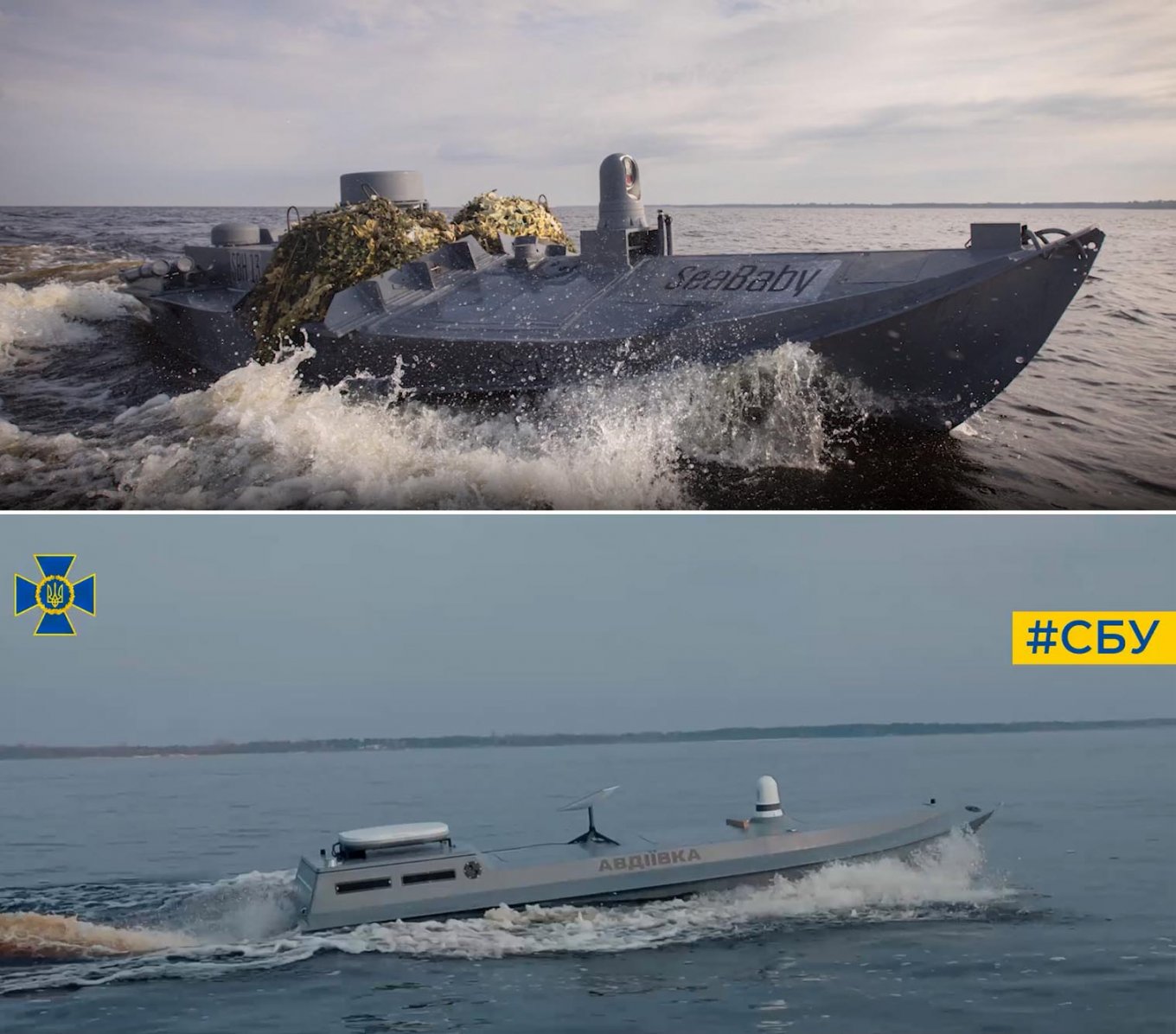
Speaking of the drone that was transferred to the museum, you can see significant damage from debris, suffered, according to the SBU, in December 2024, during a battle with russian aircraft. Recently, the russians have begun to actively use aerial drones instead of manned aircraft to detect and destroy Ukrainian USVs.
For reconnaissance and detection, they deploy scout drones like the Orion UCAV and send in Lancet loitering munitions for destruction, most likely equipped with high-explosive fragmentation warheads instead of anti-armor ones to increase the chances of hitting the target.
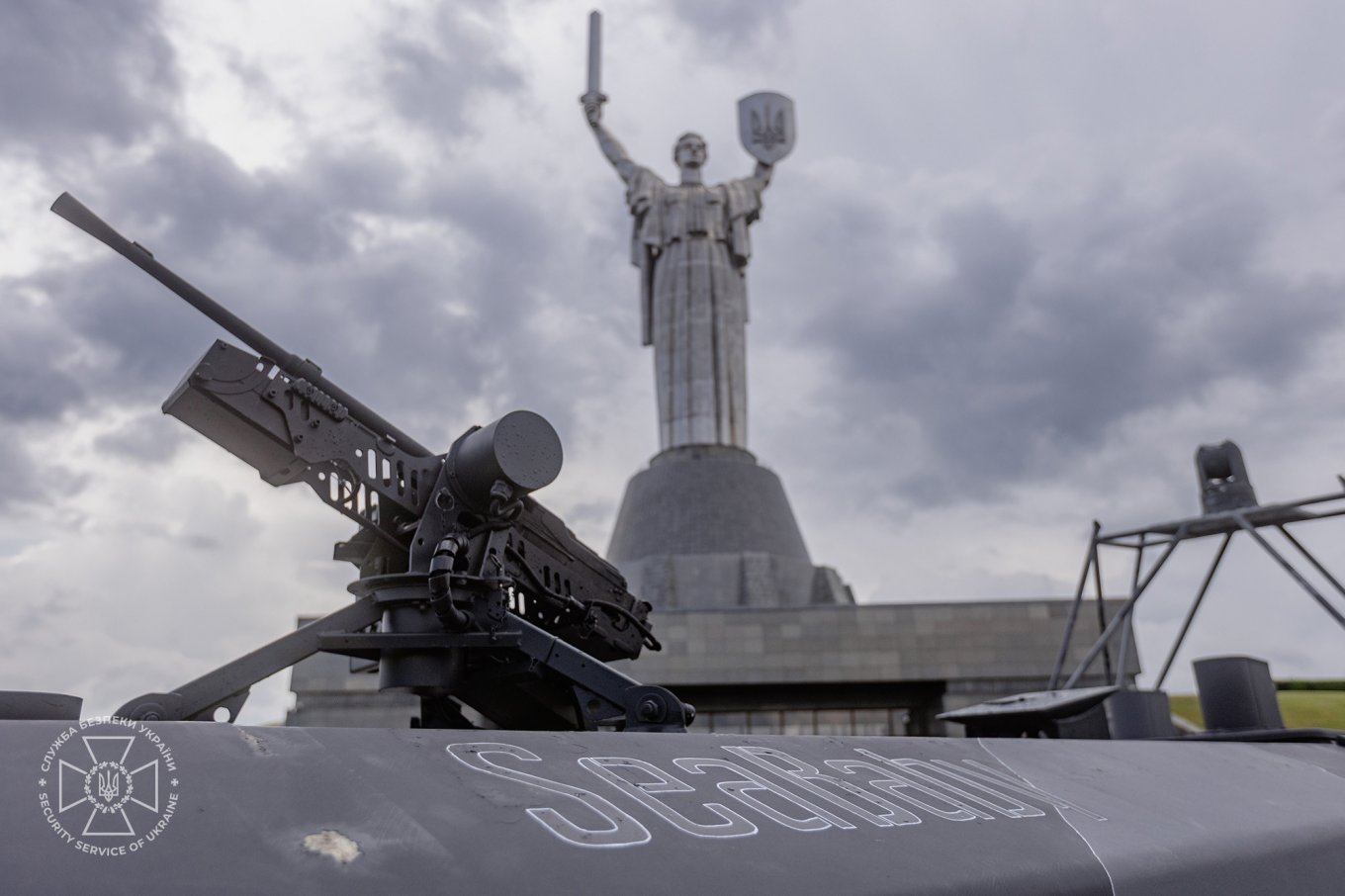
For example, a recent video shows such an episode where a russian suicide drone attacks a Sea Baby. The explosion occurs at a considerable distance from the Ukrainian vessel, allowing the latter to survive.
What's interesting here is not just the weapons involved but also the configuration of the Sea Baby equipped with a large container, perhaps for FPV drones. Also, besides the primary control receiver Starlink, it has a backup Kymeta satellite communication antenna. There is also a mast installed at the stern, the exact purpose of which is unknown.
To summarize, the Security Service of Ukraine chose its priorities in high firepower, operating range, and versatility. The drone, per official information, can cover 1,000 km to the mission area carrying up to 1 ton of payload and even return to the base all on its own.
Read more: Here's Why Magura V7 Uses the Priciest AIM-9X Missile, Not Ukrainian R-73 or Cheaper AIM-9M







